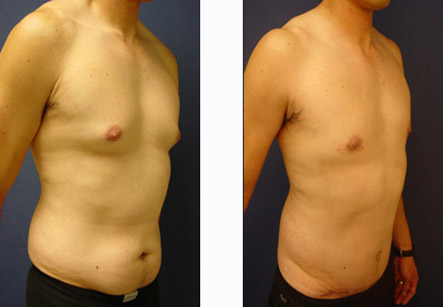Tummy Tuck
Introduction
Tummy tuck, also known as Abdominoplasty in medical parlance is a cosmetic surgical procedure that involves reshaping the contours of the abdomen, tightening loose skin and abdominal muscles and sometimes removing excess fat. This operation is usually undertaken if someone has lost a lot of weight or after pregnancy when she or he has loose abdominal skin or has fat deposits in and around the abdomen that is not reduced by exercise and dieting. However this surgery is a major one and should not be opted for as an alternative to weight loss program.
It is advisable that not to go for this operation if one is planning to get pregnant or lose weight extensively. Since the abdominal muscles need to be trimmed in this operation a pregnancy can lead to separation or tear of the fibers of the muscles and hernia. Losing a lot of weight after this operation will make the abdominal skin lax again. This may raise the need for a repeat tummy tuck.
Surgery Procedure
Abdominoplasty can be of two basic types partial or mini-Abdominoplasty and the complete Abdominoplasty. Depending on the type of operation it may take from one to five hours to complete possibility of correction. In most cases general anesthesia is preferred. Depending on the type of operation it may take from one to five hours to complete.
Under the anesthetic medication the patient will be unconscious during the operation and will not feel the pain. The patient needs to fast overnight before the operation. Antibiotics and fluids will be given to intravenously before the commencement of the operation.
Iran leaps into world’s top 10 countries performing plastic surgery

Mini Abdominoplasty
Mini Abdominoplasty is preferred if the patient have a smaller deposit especially in the lower abdomen or around the navel. A small incision is usually made. The abdominal muscles are incised and shortened to tighten the abdomen. The excess fat under the skin is also removed by a process called liposuction where the fat deposits are removed from under the abdominal skin. The skin may also be tightened with sutures as the incision is closed.
This operation can also be performed using an endoscope that is essentially a tubular instrument with a camera at its tip. The endoscope is inserted through the incision and with the guidance of the camera the operation is performed.
Complete Abdominoplasty
For a complete Abdominoplasty a large incision needs to be made usually extending from one of the hip bones to the other. This incision lies in the lower abdomen usually at the level of the pubic hair. The navel is separated from the underlying tissues. The abdominal fat is removed and abdominal muscles are shortened. While closing the incision the skin is also tightened. Before closure of the incision drainage tubes are placed in the operative site to drain the collected fluid.
Recuperation and post operative complications
The initial post operative period can bring pain and soreness all over the abdomen especially if there has been a complete tummy tuck. The abdomen will be bandaged with elastic bandages to promote healing. Patient may need to stay in the hospital for up to a week depending on the complexity of the surgery.
Pain relieving medications are prescribed for the pain. Strenuous activity, exercise, weight lifting are prohibited for a few weeks after the surgery. The incision line needs to be cared for and patient is advised to avoid bending from waist for at least a few weeks after surgery.
Some risks associated with this operation include pain, infection, bleeding and clots in the operative site. Blood or clot when collected in the operative site may need to be removed with another operation. Complete tummy tuck may also leave an unsightly scar. Smokers or diabetics or those with liver disease may have delayed healing from this operation.
The benefits of this operation are largely cosmetic but in some cases the tightening of the abdominal muscles can also help in correction of hernia. Abdominal hernia is usually caused by weakening and separation of the fibers of the abdominal muscles leading to a protrusion through the weak spot on coughing, sneezing or straining. When a tummy tuck is performed the muscles are stitched back together and tightened and that can correct the hernia.